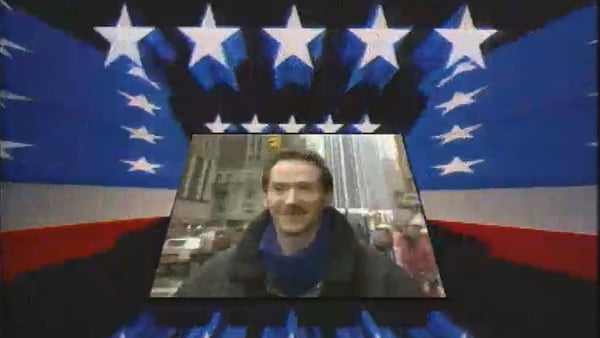Via The Blackpool Sentinel: Colm O'Callaghan remembers the late, great RTÉ DJ (and VJ) Vincent Hanley, host of pioneering music television show MT USA and the subject of a new RTÉ One documentary, entitled Fab Vinny.
Broadcasters Donal Dineen and the late Vincent Hanley never met and, on the surface, have little in common bar the radio. One revelled in the glare, came alive in front of an audience and was widely known by his nickname, Fab Vinny. The other has long been uneasy in the spotlight and only really comes alive after dark ;- when he hosted a nightly national radio programme he’d reluctantly whisper his name to a small but loyal cadre of music fans, anoraks and enthusiasts. One was The Disco King, the other was strictly No Disco.
But I thought of Donal within minutes of the retro-skewing opening titles of Eimear O’Mahony and Sinéad Ní Churnáin’s forthcoming short documentary on Hanley, Fab Vinny, which airs on RTÉ One on October 31st next and which looks at the short life of one of the most arresting characters to have ever lit up the radio and television schedules in Ireland. And I thought especially of the many conversations we had, twenty-five years ago, when we were wandering blindly together through the first, nervy months of the No Disco television series and when, left to our own devices on what was in essence an illicit back-room operation, we worked away on the fly. All that kept us afloat was the buoyancy that often comes from gut instinct.
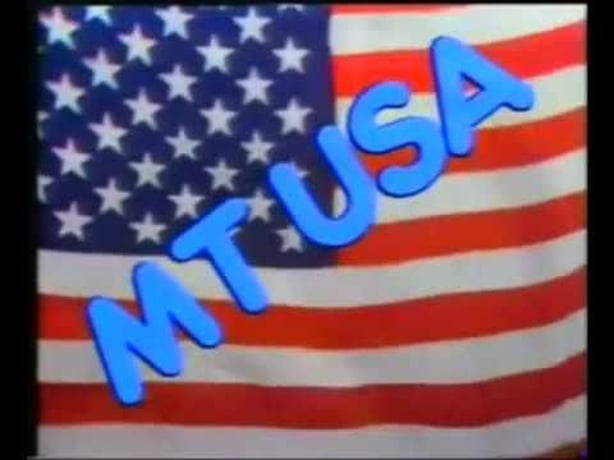
During that time we’d regularly reference MT USA [Music Television USA], the pioneering series that Conor McAnally and Bill Hughes produced and that Vincent Hanley presented on Irish national television on Sunday afternoons for three seasons from Autumn, 1984. Because if it wasn’t for MT USA, No Disco would never have seen the light of day on the same channel, RTÉ 2, ten years later even if, on most levels, the two shows were literally worlds apart.
Thirty years after his premature death in April, 1987, Vincent Hanley is remembered best for the series that brought wall-to-wall popular music television to the masses, many of whom were located across provincial Ireland where, on a clear day, you had two part-time channels to pick from. MTV had launched in the United States two years previously and, although music video was still an infant form, MT USA was prescient and on the money :- Hanley saw the potential and ran with it.
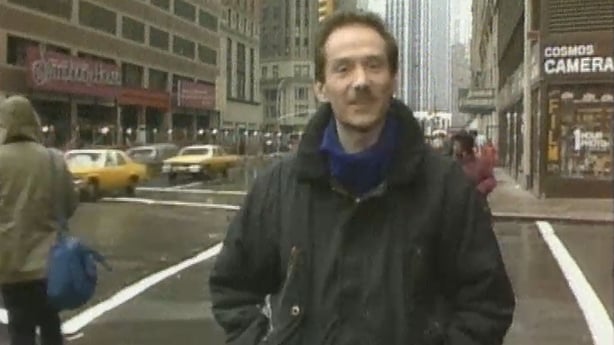
Like our own series that launched in 1993, it was cut in the likeness of its host – bold, ambitious and fabulous – even if its production model meant it was frequently paddling furiously beneath the surface. Hanley’s links were shot on location around popular New York city landmarks, to where Bill Hughes would take flight from Dublin every week to capture the host at play on his adopted estate, centre-stage on the city’s streets, lord of all he surveyed.
Fab Vinny was out there, somewhere over the rainbow on Planet Fabulous, having the time of his life.
Fab Vinny was one of the programme’s two lead characters – the other was the city of New York itself – and his scripts and interviews with everyone from randomers on the city’s sidewalks to the biggest names in popular music, often told you far more about him than about much of the music he featured, from which he often appeared utterly detached. But the message was simple :- Fab Vinny was out there, somewhere over the rainbow on Planet Fabulous, having the time of his life. And on Sunday afternoons, he’d blag every one of his viewers with him into the most exclusive showbiz party of the week.
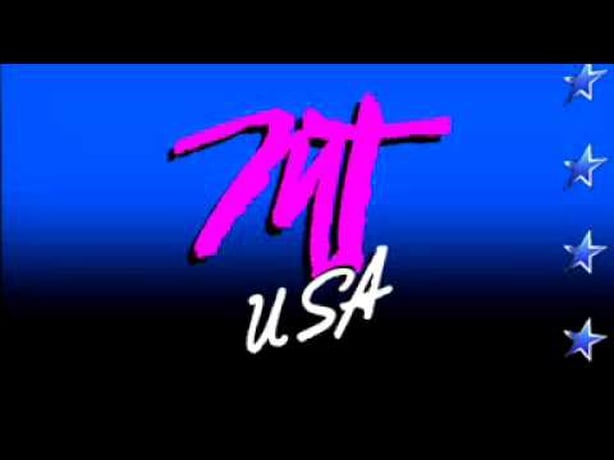
Those signals weren’t lost on an entire generation of famished music fans for whom the three-hour long programme quickly became an appointment to view. Irrespective of whether or not you were from a small village on the Cork/Kerry border like Donal Dineen or, like myself, from a village on the northside of Cork city, MT USA was an absolute event and, for the three years it remained on air, dominated our weekends. As the country went to sleep after Summer, once the All-Irelands had been won and the trophies gone home for the year, it helped us to flesh out the winter with giddy talk.
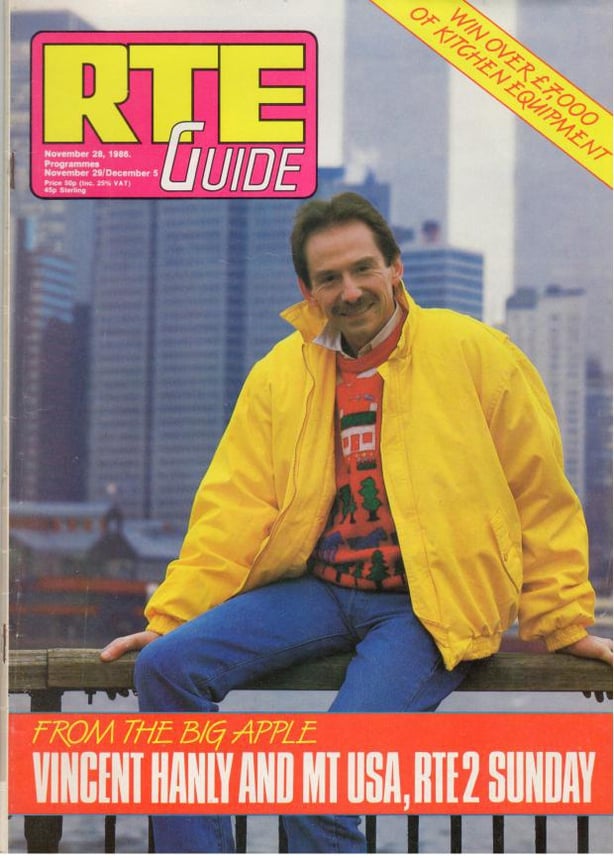
But MT USA does only scant justice to Hanley’s career in broadcasting – and his complicated gestalt – the bulk of which was spent at RTÉ ;- he soared high quickly but was regularly on the move. In the best and worst traditions of daytime radio he revelled in his nickname which, according to Bill Hughes, his life-long friend and colleague on the MT USA production team, he absolutely loved. ‘Everything [with Vincent] was fab’, he remembers. ‘And of course he had to be fab too’. And so whenever the transmission light went on in studio or whenever he heard a director’s countdown, Vincent Hanley became Fab Vinny, a smelting of a private and public face that for years gave Hanley an enigmatic edge. At least until the last months of his young life when the lines became blurred and the joins began to sunder.
His brother, Fergus, recalls how, growing up as part of a small family in Clonmel, County Tipperary, Vincent and himself ‘lived on different planets’. Bill Hughes describes him as ‘very much a smalltown boy in some ways, but very much angry at the idea that anyone would think he was a smalltown boy’. And throughout his career Hanley consistently sought out a town that was big enough to accommodate him, moving first from Clonmel to Cork, then onwards to Dublin, from there to a short spell with Capitol Radio in London, and ultimately on to New York City.
‘Everything [with Vincent] was fab’, he remembers. ‘And of course he had to be fab too’.
He began his broadcasting career, like many others, in the small, off-Broadway outpost in RTÉ in Cork, where his attractive tenor was quickly recognised and from where he hosted several music-based radio programmes for the local opt-out service while working relief shifts in the locals nightclubs. He moved quickly to the campus in Montrose, working initially as a continuity announcer on radio and television before he was unveiled as one of the bulwarks on the new national popular music radio station, Radio 2, when it was launched in May, 1979. Hanley’s anchor slot on the weekday mornings between 9.30 am and 12 noon saw him scaffold the daily schedules alongside the likes of Ronan Collins, Marty Whelan, Jimmy Greely and Larry Gogan in the heart of peak-time, supported by the likes of Dave Fanning, Gerry Ryan and Pat Kenny on the flanks and in the margins.
But as well as dominating the national pop radio schedules, the first of the Radio 2 recruits also made regular hay on the burgeoning club circuit around the country where, for many years, they drew considerable live crowds into regional dancehalls, rendering much of the last vestiges of Ireland’s showband scene redundant as they did so. And while they were also handsomely palmed for their troubles, the broader picture wasn’t lost on Hanley :- in entertainment, as in life, time waits for no one.
We need your consent to load this YouTube contentWe use YouTube to manage extra content that can set cookies on your device and collect data about your activity. Please review their details and accept them to load the content.Manage Preferences
Given the easy availability of technology and the daily blizzard of user-generated video material today, its difficult to appreciate just how vital the MT USA series was. Conor McAnally rightly claims that the show was instrumental in breaking several prominent American acts on this side of the Atlantic – ZZ Top, especially – simply by heavily rotating their distinctive short-form music videos to large audiences. The series also gave a considerable leg-up to U2 and initially featured some of the band’s highly-charged live performances at the magnificent Red Rocks arena in Colorado in 1983 and which were also captured on the band’s Under A Blood Red Sky album. While word of U2’s breakthrough in America was rife back in Ireland – often imparted first-hand by returned immigrants who’d witnessed the band’s live shows or television appearances there – MT USA captured the evidence on video and reinforced the message back home.
We need your consent to load this YouTube contentWe use YouTube to manage extra content that can set cookies on your device and collect data about your activity. Please review their details and accept them to load the content.Manage Preferences
That same oxygen supply also helped to launch Suzanne Vega more widely following her breakthrough in the U.S. in 1984, while also pushing the likes of established American acts like Pat Benatar [her Love Is A Battlefield must have been the single most played video in the entire history of the show], Billy Joel, Bruce Springsteen and Fleetwood Mac. To its credit, MT USA also supported a slew of emerging mainstream acts, most notably Madonna, who’d released her debut album in 1983 and whose arrival as one of the most influential figures in the history of popular music coincided with the peak of the show’s popularity. A popularity that was reflected in the widespread recording of weekly episodes of the series onto VHS cassettes in households all over Ireland.
We need your consent to load this YouTube contentWe use YouTube to manage extra content that can set cookies on your device and collect data about your activity. Please review their details and accept them to load the content.Manage Preferences
Inevitably, and as was par for the course in Ireland during the 1980s, the idea of popular contemporary music playing to large, family-centred audiences on Sunday afternoons drew fire and ire from the usual quarters. Largely because of the lascivious, on-tape carry-on of the likes of Frankie Goes To Hollywood, Prince and Madonna herself, Bill Hughes became a regular visitor to the RTÉ Radio Centre where he’d fend off familiar criticisms from the nation’s moral custodians and robustly defend his series. ‘We were read from the altar’, recalls MacAnally over thirty years later, knowing that content of even a moderately sexual nature – and the indignation that often followed – was ultimately good for business.
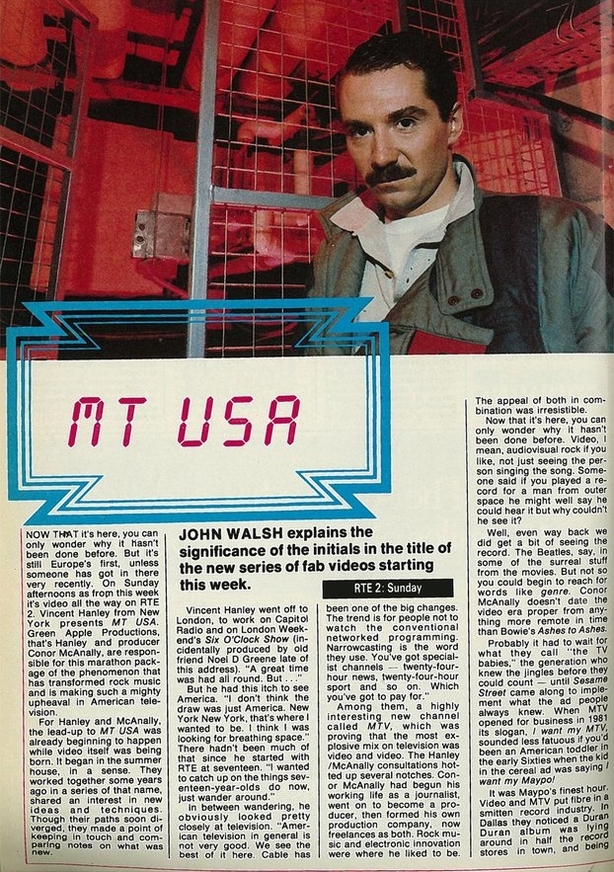
A point not lost on a vocal parish priest in the small West Cork village of Union Hall, who made this point repeatedly during a plainly bizarre series of moral sermons he delivered from the pulpit that I witnessed as a gob-smacked teenager on holidays with my family at this time.
But notwithstanding the odd set-to, MT USA was ostensibly a safe, very middle-of-the-road affair that served up a diet of radio-friendly rock and pop music. You’d often wait for hours to see something moderately lateral and out of the ordinary and, more often than not, you’d leave disappointed, returning the following week in the hope of a fleeting glimpse of Morrissey, Paddy McAloon or Michael Stipe. Like No Disco, the show is routinely viewed now through a tinted lens ;- it was often far more stylish than it was substantial, much less than the sum of its parts and very definitely of its time. Grabby graphics and noisy stings could never convincingly mask its easy, mainstream feel, even if Hanley was a pioneering jock with a far looser approach than most of his colleagues, more Kenny Everett than Pat Kenny.
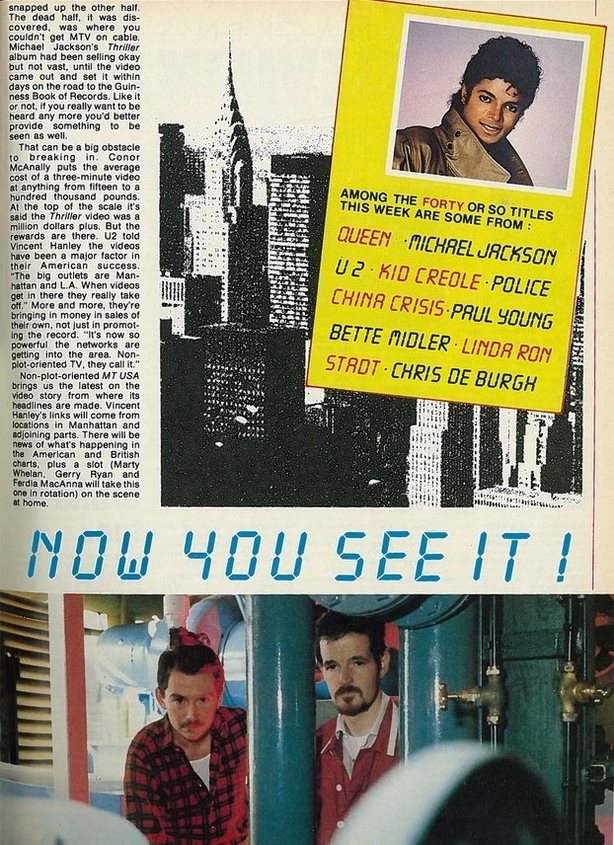
Vincent Hanley was a gay man who died of an AIDS-related illness, the first public Irish figure to succumb to a disease about which, in 1987, little was known. For many years the exact cause of his death remained unclear to all but those inside his coterie of friends and family. More broadly, homosexuality was still outlawed in Ireland and Dublin boasted only one gay club, which operated on the condition that no alcohol could be served there.
One of the more striking aspects of the Fab Vinny documentary is how, in it’s deft use of archive footage, some of it long-lost and some of it previously unseen, the film adroitly captures Hanley’s physical disintegration during the final pages of the MT USA history and the last months of his life. In as much as he’d grown up and come of age in the public eye, he ailed visibly on camera too.
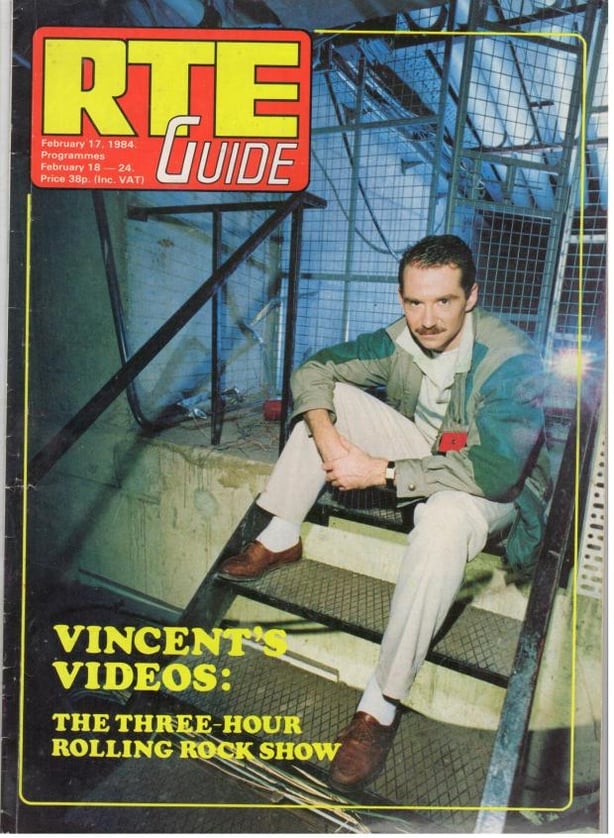
In the run-up to Christmas, 1986, Hanley was back home in Ireland and, to those catching up with him for the first time in months, his appearance – of which he was forever proud – aroused no little concern or comment. In order to allay concerns for his well-being, he did a memorable radio interview on The Gay Byrne Hour on RTÉ Radio One where he dismissed suggestions that he was ill. Dublin’s Evening Herald newspaper had led, days previously, with a story headlined ‘Health Fears For Pop DJ Hanley’ in which, citing un-named sources and reacting to the media’s gossip mill, they’d landed a serious end-of-year flyer. But one which Vincent was anxious to bury :- he suggested to Byrne that The Evening Herald had implied he was suffering from AIDS.
In as much as he’d grown up and come of age in the public eye, he ailed visibly on camera too.
Conor McAnally had first noticed his physical decline from a seat in front of a bank of monitors in the video editing suite in which he had a weekly inject of MT USA video footage. A full decade before the concept of reality television, Vincent Hanley’s weekly links chronicled the effects of a debilitating condition in real time. Bill Hughes reveals that, during the recording of Hanley’s pieces to camera during the last months of the MT USA run in the winter of 1986, the presenter was often too weak to stand and had to be regularly supported, often using his director’s arched back to sit on in between takes.
Vincent Hanley died in Saint James’s Hospital in Dublin on April 18th, 1987, in the presence of his closest friends. On the day of his funeral in Clonmel days later, Marian Richardson was presenting hourly news updates on Radio 2, one of the presenter’s former stomping grounds. And as she referenced the funeral on her broadcast just after lunch, she struggled to retain her composure as she referred to her late colleague, and broke down.
Simply Red’s version of the old Cole Porter song, Everytime We Say Goodbye, segued directly out of the end of the bulletin.
We need your consent to load this YouTube contentWe use YouTube to manage extra content that can set cookies on your device and collect data about your activity. Please review their details and accept them to load the content.Manage Preferences
Fab Vinny airs on RTÉ One on Tuesday, October 31st at 7PM. Read more from The Blackpool Sentinel here.


